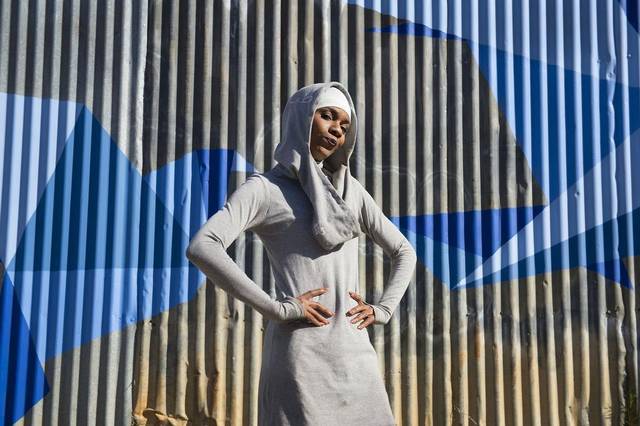By Ed Fletcher
The Sacramento Bee
WWR Article Summary (tl;dr) Latiya Gholar is the Sacramento-based clothing designer behind the American Umma collection. Gholar describes her work as a “hybrid collection of traditional Islamic concepts fused with American fashion hinted with futuristic elements of design.” A New York Fashion Week event in early February showcased 21 pieces of her collection.
The Sacramento Bee
A local fashion designer is turning heads — from New York to Sacramento — with a clothing line that infuses traditional Islamic clothing for women with bright colors, soft fabrics and sexy lines.
“My clothing is not what you think of when you think Muslim women,” said designer Latiya Gholar, the Sacramento-based clothing designer behind the American Umma collection.
Gholar describes her work as a “hybrid collection of traditional Islamic concepts fused with American fashion hinted with futuristic elements of design.” A New York Fashion Week event in early February showcased 21 pieces of her collection. Her work was also featured at Sacramento Fashion Week’s Feb. 23 “Fashion on Film” event.
Gholar, 35, began to design clothing that covers the body after her religious conversion to Islam in 2008 and enrollment in fashion school a year later. Her passion for her work led her on a voyage of discovery, learning how different Muslim cultures interpret the Quran’s teachings on the dress of women in different ways.
Most Muslim cultures agree the Quran teaches women to dress modestly, however the requirement to wear a veil or hijab and other practices vary among those practicing the religion. Gholar’s outfits have traditional long sleeves, drape nearly to the ankle and include a head-covering. They also hug the body, pop with vibrant colors, and include decadent fabrics.
She said Americans often “think terrorist” when they see women dressed in black Saudi-style clothing.
“I want to remove that image,” Gholar said. “We take the veil off of what a Muslim woman looks like.”
Gholar, who grew up in the Baptist faith before converting, said some traditionalists are not fans of her clothing.
But with millions of women practicing Islam across the globe, Gholar said there are still plenty of potential customers.
Her market, she said, is Muslim women who normally wear Western clothing and women of any faith who are interested in covering more of their body while remaining fashionable. She also wants to reverse what she called a feminist push toward half-naked celebrities on the red carpet. (Singer Nicki Minaj recently lit up social media by wearing one-shouldered top to a Paris Fashion Week event that — save a silver pastie — exposed her left breast.)
“American Umma isn’t for the traditional. (It is) the middle ground,” she said.
Early in her faith she wore a hijab, but said she quit as she noticed those in social settings excluding her from conversations and generally seeking distance.
“I felt like I had a big zit on my head,” she said. Clothing that bridges the gap can actually promote Islam she said.
“It (American Umma) can be an antidote to extremism,” Gholar said.
Gholar said the line is getting a warm reception. She said she hopes to start selling clothing through her website soon and later into boutique stores.
Sacramento designer and former fashion instructor Gerry Simpson said her designs can clearly make a splash — something runway fashion strives to do — but said the challenge now is finding a market for her line.
“It’s one thing to do fashion for entertainment, but come Monday morning you need a product,” said Simpson, who owns a North Sacramento gallery.
He gave her an A+ for stepping out and doing her own thing. The question is whether there is a market for it. He wondered whether Muslim women are looking for sheer sexy clothing.
Basim Elkarra, executive director of the Sacramento chapter for the Council on American-Islamic Relations, said there is plenty of room in the marketplace for nontraditional Muslim clothing.
“Muslim are not asked to dress the same around the world,” Elkarra said. “There certainly is a market. It’s a growing market.”














































































































































































































































































































































































